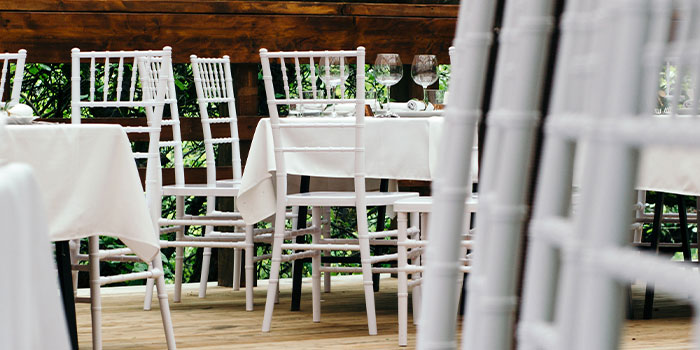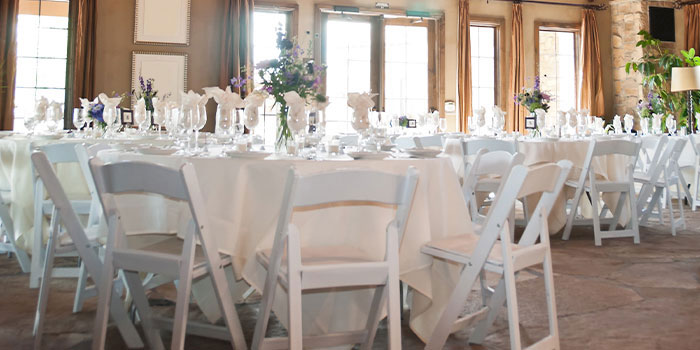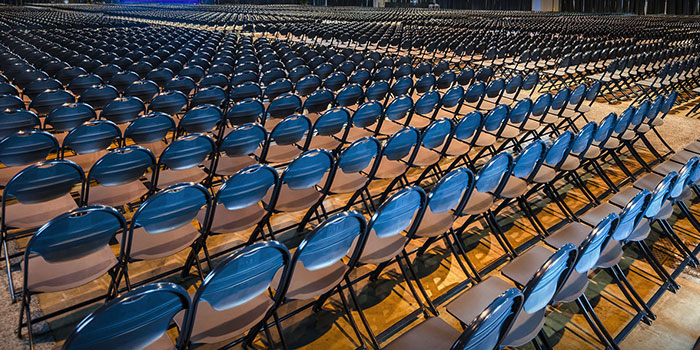
Al igual que la ropa que usas, la tapicería de las sillas necesita lavarse. Realizar una limpieza ligera y regular es la mejor manera de mantener sus sillas con un buen aspecto.
Aquí encontrará instrucciones detalladas sobre cómo limpiar los tipos de tela de tapicería utilizados en las sillas MityLite.
Desinfecte la tapicería de las sillas para evitar la propagación de gérmenes
¿Le preocupa minimizar la propagación de bacterias y virus en sus eventos? Registrado por la EPA desinfectantes que cumplen los criterios para su uso contra el SARS también pueden emplearse para desinfectar tejidos y prevenir la propagación del coronavirus y otras enfermedades contagiosas.
Los Centros para el Control y la Prevención de Enfermedades recomiendan utilizar los siguientes productos para desinfectar sillas y mesas en áreas públicas.
- Asepticare™
- Blanqueador 1:10 (blanqueador 10%)
- Spray desinfectante Bleach-Rite®
- CaviCide™
- CaviCide1™
- Limpiador germicida con lejía Clorox® Healthcare
- Spray desinfectante limpiador de peróxido de hidrógeno Clorox®
- Limpiador desinfectante esporicida Diversey™ Avert®
- Limpiador multisuperficie Clean & Fresh de Lysol
- Oxivir® 1 UTR
- Oxivir® tuberculosis
- Limpiador desinfectante diario OxyCide™
- Virex II 256
Cómo limpiar tejidos de olefina (incluidos los tejidos Sherpa y Shire)
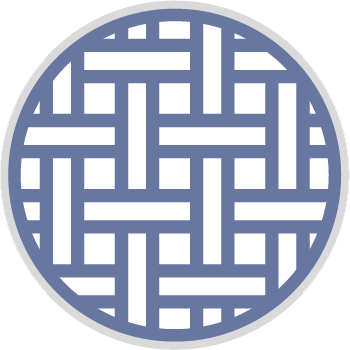
Para tapizados Sherpa y Shire (y otros tejidos de olefina 100%), se recomienda el siguiente tratamiento desinfectante para desinfectar frente a gérmenes y virus, incluso frente al coronavirus (COVID-19).
Utilice lejía doméstica (que incluya Hipoclorito de sodio 5.25% o 6.00%–6.15% dependiendo de la etiqueta del fabricante) diluido en agua a una Proporción de dilución 1:10, que es 1,5 tazas de lejía en 1 galón de aguaEl uso de lejía en las telas Sherpa y Shire olefin no tendrá efectos nocivos y los tratamientos recomendados no anularán la garantía. Sin embargo, se recomienda probar la solución de limpieza en un área poco visible antes de usarla en cualquier lugar.
Prepare la solución antes de cada uso, ya que el blanqueador es sensible a la luz. Además, tenga en cuenta que el blanqueador caduca un año después de su producción y puede perder eficacia si no se almacena correctamente.
Elimine la tierra orgánica y la materia derramada antes de desinfectar. La desinfección requiere un tiempo de contacto húmedo recomendado de 10 minutos ser efectivo. Recuerde que las soluciones de cloro son corrosivas y pueden picar el metal y dañar la piel.
Nunca mezcle lejía con ningún producto que contenga amoniaco o ácidos.
Cómo limpiar tapicería de poliéster y mezclas de poliéster 100%
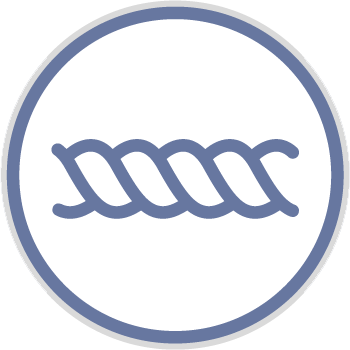
Al limpiar tapizados fabricados con poliéster 100% o mezclas de poliéster, es mejor utilizar productos con peróxido de hidrógeno.
Recomendamos utilizar algo como Clorox.® Limpiador y desinfectante con peróxido de hidrógeno. Este producto, que está disponible en forma de aerosol (para telas) y de toallita (para superficies duras), mata los patógenos tanto en superficies duras como blandas y puede eliminar bacterias y virus en 30 segundos. Este limpiador de grado industrial se puede aplicar a una variedad de telas, incluidas las de poliéster 100%. Este limpiador no tiene compuestos orgánicos volátiles (VOC), vapores fuertes, blanqueador ni fragancia agregada, y el ingrediente activo, peróxido de hidrógeno, se descompone en agua y oxígeno con el uso. Sin embargo, se recomienda probar primero la solución limpiadora en un área pequeña y discreta.
Tenga en cuenta que las telas de poliéster y mezclas de poliéster son sensibles a los efectos de la lejía. A Solución de lejía 3% (1/3 taza de lejía por 1 galón de agua) es la concentración más alta que se puede utilizar, pero no se puede garantizar que el uso a largo plazo de una solución de cloro no suponga un problema.
Otro producto recomendado para limpiar tapicerías es Lysol® Limpiador multisuperficies Clean & Fresh, que también está registrado en la EPA por sus propiedades para combatir virus y elimina el 99,91 TP3T de virus y bacterias. Sin embargo, el ingrediente activo, Cloruro de alquildimetilbencilamonio, se ha implicado en varios efectos adversos para la salud, por lo que querrás evitar el contacto con la piel, la inhalación o la ingestión accidental.
Como ocurre con todos los limpiadores potentes, manténgalo alejado de los niños, aplíquelo solo en áreas bien ventiladas y lave las superficies con agua limpia después de su uso.
Cómo limpiar telas Crypton y Nanotex

Las telas Nanotex y Crypton son materiales de múltiples capas con tecnología antimicrobiana y resistente a las manchas y una barrera permanente contra líquidos integrada. Se ha demostrado que la barrera de humedad patentada de Crypton evita que los sólidos y líquidos penetren en el cojín que se encuentra debajo. Esto hace que la tela Crypton sea una de las telas para tapicería más fáciles de limpiar.
Sin embargo, es posible que una superficie parezca limpia pero no esté desinfectada. Crypton recomienda usar su desinfectante y desodorante aprobado por la EPA en las telas de barrera Crypton. Esta fórmula está diseñada para entornos de uso intensivo y abuso. Es un limpiador desinfectante de un solo paso que es eficaz contra un amplio espectro de bacterias, virus, moho, hongos y hongos.
Lo mejor de todo es que este desinfectante es eficaz para prevenir la propagación de bacterias y virus.
Para desinfectar y limpiar completamente la tela, siga los siguientes pasos:
- Elimine los derrames con un paño absorbente o una toalla de papel. Si es necesario, limpie las zonas muy sucias con agua y jabón.
- Elimine el exceso de humedad y jabón mediante una aspiradora o pasando un paño limpio y seco. Retire todo el jabón para que no atraiga la suciedad.
- Pruebe el Desinfectante y desodorante Crypton en un área pequeña y discreta.
- Aplicar Desinfectante y desodorante de Crypton Sujételo a una distancia de entre 15 y 20 cm de la superficie. No inhale los vapores del aerosol.
- Enjuague la tela con agua después de la aplicación.
- Deje la superficie húmeda durante 10 minutos.
- Después de 10 minutos, seque con un paño o deje secar al aire.
Cómo limpiar telas de poliéster tejidas y revestidas

Para el mantenimiento general de telas tejidas y recubiertas de poliéster, aspire regularmente las superficies para eliminar todo el polvo y las partículas sueltas, limpie las áreas de suciedad o manchas y desinfecte regularmente.
Para desinfectar, primero confirme que es seguro usar lejía en su producto probando un área pequeña en un lugar discreto. Mezcle una solución de lejía y agua limpia con un proporción de 1:10. Proteja y cubra la estructura de los muebles junto con las áreas circundantes y trabaje en un área bien ventilada con guantes y protección para los ojos.
Después de desinfectar la tapicería, enjuágala bien varias veces con agua limpia. Cualquier resto de lejía en la tela puede degradarla o acortar su vida útil.
Cómo limpiar tejidos de punto y tejidos de punto

La siguiente lista de limpiadores sugeridos se puede utilizar para desinfectar telas tejidas y de punto y evitar la propagación de virus, bacterias y otras enfermedades contagiosas. Tenga en cuenta que estos productos de limpieza no se han probado rigurosamente en todos los tipos y estilos de tela, por lo que la información que sigue debe considerarse como sugerencias generales en lugar de recomendaciones. Pruebe siempre la solución de limpieza primero en una zona pequeña y poco visible.
- Spray desinfectante Lysol
- Toallitas a base de peróxido (varias marcas)
- Toallitas con alcohol con o sin desinfectante cuaternario (varias marcas)
Instrucciones de desinfección:
Humedezca ligeramente la tela y déjela secar al aire. Tenga en cuenta que cuando use toallitas, si el color se transfiere a la toallita, la tela no destiñe con ese producto y estas toallitas no deben usarse. Evite el uso de toallitas a base de lejía a menos que se sepa que la tela no destiñe al blanqueador. Si no lo sabe, asuma que la tela no es apta para usar lejía.
Desinfección en entornos sanitarios:
La mayoría de los desinfectantes hospitalarios están diseñados para usarse en superficies duras y, por lo general, no son apropiados para tejidos o tejidos de punto. Sin embargo, se han realizado pruebas limitadas con los siguientes productos de limpieza y no parecen afectar el color o la integridad de la tela. Siga cuidadosamente las instrucciones de la etiqueta, especialmente con respecto a la dilución del desinfectante.
- Virex II 256
- Tuberculosis oxivir
- Toallitas germicidas de tela Super Sani
- Toallitas Cavicida y Cavicida
Instrucciones para la desinfección en entornos sanitarios:
Humedezca ligeramente la superficie de la tela y déjela secar; no la sature. Si prevé aplicar el producto varias veces, enjuague con agua limpia para evitar la acumulación de residuos químicos en la tela.
Cómo limpiar tapicería de poliuretano

Para el mantenimiento general de las telas de poliuretano, aspire las superficies con regularidad para eliminar todo el polvo y las partículas sueltas, limpie las áreas manchadas o sucias y desinfecte.
Trate las manchas lo más rápido posible. Será cada vez más difícil quitar una mancha cuanto más tiempo se deje reposar. Retire sustancias sólidas o semisólidas utilizando un objeto plano. Retire la mayor cantidad de mancha posible y luego aspire bien usando los accesorios adecuados antes de limpiar con un agente.
Pruebe previamente cualquier método de limpieza o agente desinfectante en un área pequeña, oculta y poco visible para asegurarse de que no dañe la tela. Recomendamos utilizar varias aplicaciones menos concentradas de soluciones de limpieza en lugar de una sola aplicación concentrada, ya que así habrá menos probabilidades de dañar la tela. También debe proteger y cubrir la estructura del mueble junto con las áreas circundantes y trabajar en un área bien ventilada con guantes y protección para los ojos.
Evite permitir que los líquidos de limpieza penetren en la superficie de la tela. Elimine los líquidos inmediatamente secando con un paño limpio, absorbente y que no destiña.
Quite las manchas usando un cepillo suave o una esponja y luego aplique agua tibia y jabón sobre la mancha. No moje demasiado ya que esto puede dejar un anillo y absorber cualquier solución de limpieza restante. Utilice trazos ligeros y rápidos, comience desde el exterior de la mancha y avance hacia el centro. Evite frotar o frotar el área ya que esto puede dañar la tela. Utilice un paño limpio y agua fría para eliminar cualquier residuo.
Deje que la tela se seque por completo y no use calor, ya que esto fijará la mancha en la tela. Al igual que con las telas tejidas y de punto, enjuague bien después de aplicar blanqueador para evitar degradar la tela.
Cómo limpiar tapicería de vinilo (PVC)

Para desinfectar la tapicería de vinilo de PVC (cloruro de polivinilo), recomendamos utilizar estas soluciones aprobadas por la EPA que han demostrado desinfectar contra el COVID-19 y otras cepas del coronavirus.
- una solución de lejía 10% mezclado con 90% agua limpia
- Paños Super Sani
- Virex™ II, 256
Siempre pruebe previamente cualquier método o agente de limpieza en un área pequeña, oculta y discreta para asegurarse de que no dañe la tela.
Tenga en cuenta que los limpiadores y desinfectantes deben utilizarse en las diluciones recomendadas y nunca en forma concentrada. Asegúrese de limpiar los desinfectantes con agua limpia y luego seque el vinilo con una toalla limpia para eliminar cualquier residuo químico que pueda decolorar o degradar la superficie del material.
Cuando limpiar la tapicería no es suficiente
Si las sillas de su evento han comenzado a mostrar su antigüedad y la limpieza y la desinfección ya no funcionan, tal vez sea el momento de actualizarlas o reemplazarlas. Explore el catálogo de sillas duraderas de MityLite sillas de banquete tapizadas.

Mejora tu espacio con muebles nuevos. Contacto ¡Un representante de ventas hoy!
